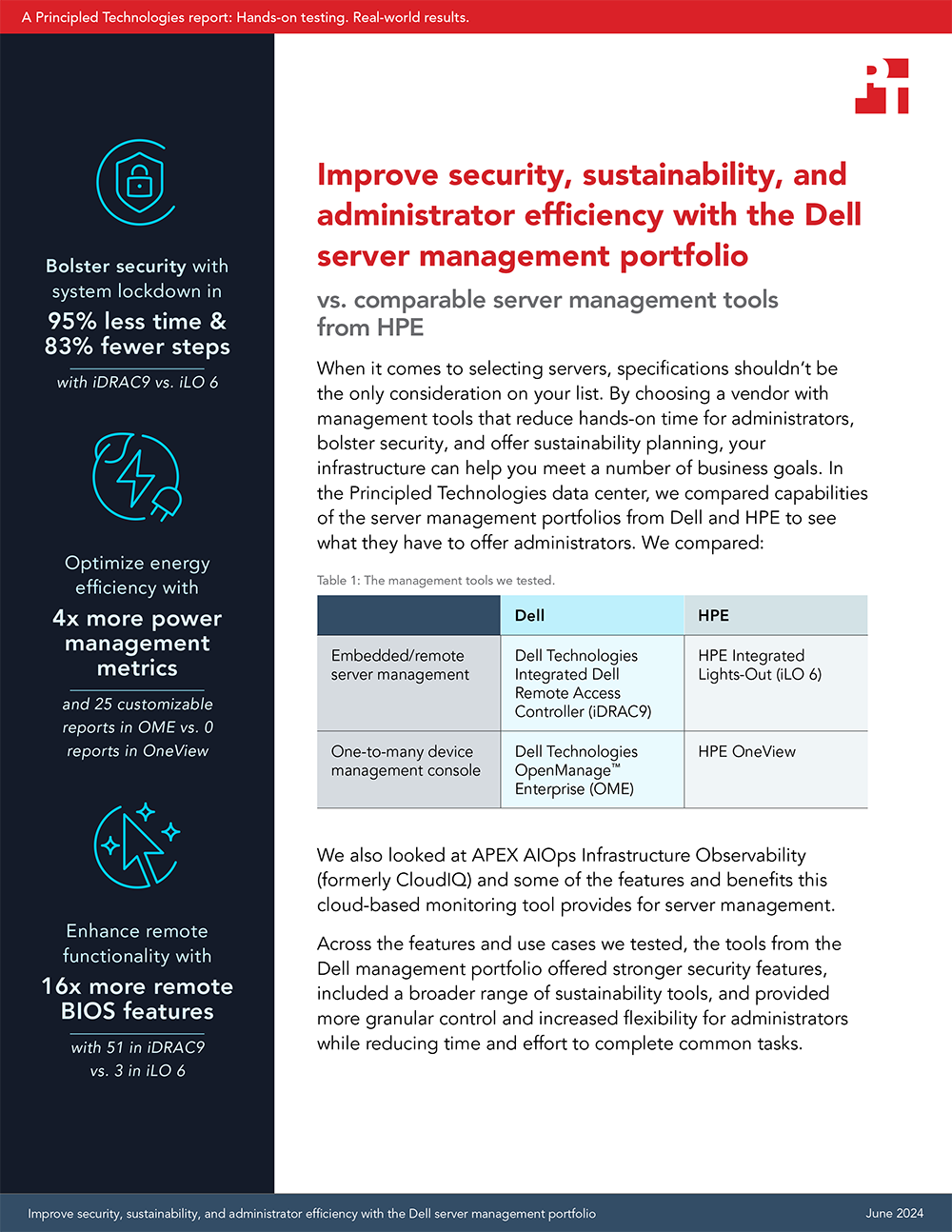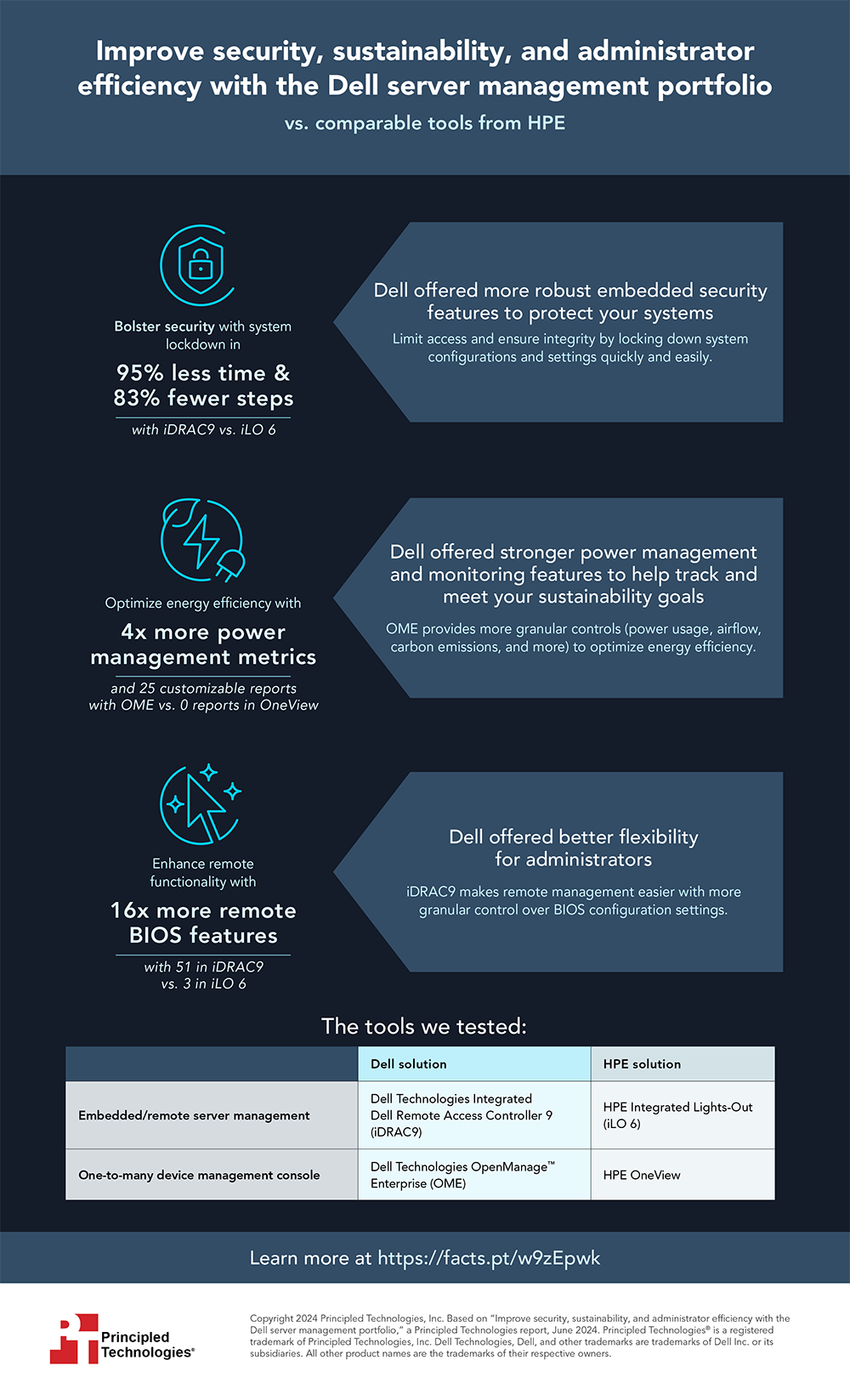
For IT administrators and decision makers, real-world server value often involves much more than the amount of work a system can do or how fast it completes specific computational tasks. It can be just as important to consider how a vendor’s management tools will affect key factors like end-to-end security, automation, setup and deployment, remote control, and power management and monitoring. The right server management tools can maximize the benefits that organizations get from their hardware by helping to significantly improve mission-critical reliability, operational efficiency, and infrastructure resilience.
In an extensive study, we compared the capabilities of a Dell iDRAC9 embedded server management portfolio to those of an HPE iLO 6 embedded server management portfolio. We also compared Dell OpenManage Enterprise to HPE OneView for one-to-many device and console management. Finally, we looked at some of the features and benefits of the Dell APEX AIOps Infrastructure Observability cloud-based monitoring tool.
We found that the Dell server management tools we tested offered more features than the comparable HPE tools in the areas of security, energy efficiency, management, and monitoring. Compared to the HPE portfolio, the Dell portfolio provided our technicians with more remote management options, dramatically reduced the time it took to perform security tasks like system lockdowns, and offered more granular power and thermal management controls. These features and benefits can help companies streamline workflows, manage and reduce data center costs, make progress towards sustainability targets, and free up employee time for innovation.
For more details about our in-depth server management comparison study, check out the report and infographic below.
Principled Technologies is more than a name: Those two words power all we do. Our principles are our north star, determining the way we work with you, treat our staff, and run our business. And in every area, technologies drive our business, inspire us to innovate, and remind us that new approaches are always possible.







